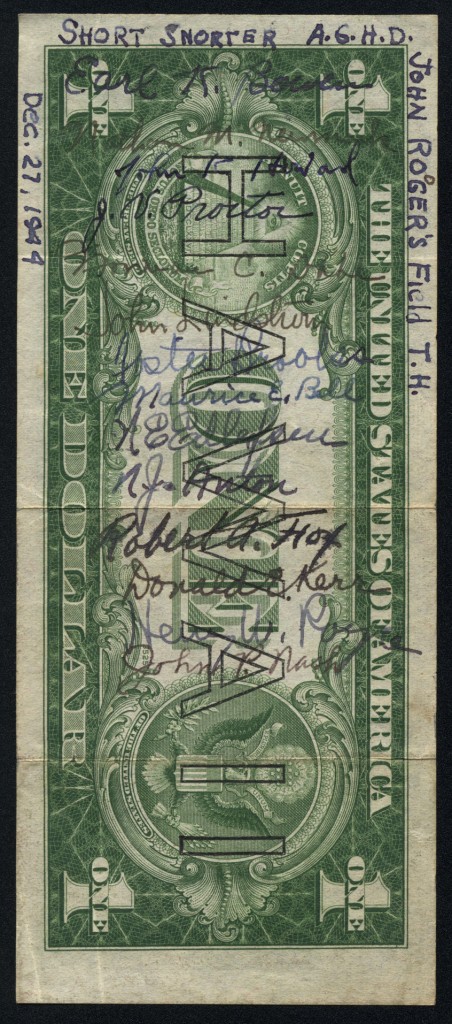Short Snorter: Prof. Dietz’s WWII Ritual
-
-
slice.mit.edu
Filed Under
Recommended
Guest Blogger: Debbie Levey, CEE technical writer
Groups in the military during World War II, as they gathered for what might be the last time, sometimes wrote all their names on each other’s dollar bills. Dubbed “short snorters,” these inscribed bills served as good luck tokens and also had another value—anyone who failed to present his short snorter upon demand by another signer owed him a drink.
MIT Professor Albert Dietz ’32, SM ’36, ScD ’41 participated in this ritual on Dec. 27, 1944, at John Rogers Field, Hawaii, when he worked with the Office of Scientific Research and Development. A list of 14 names follows his initials on the dollar bill, made difficult to read by the large superimposed word, Hawaii, stamped on the back. Both sides of the bill bear a Hawaii stamp, added to make the currency worthless off the islands in case of Japanese conquest. This short snorter turned up in a box of papers and photos sent by Dietz’s son recently to the MIT Civil and Environmental Engineering Department. (It was returned to his family.)
During his many decades at MIT, Professor Dietz’s research interests included building construction, management, materials, and architecture. A great believer in the potential of plastics, he set up the first research lab to study plastics as construction materials. This work led to the almost indestructible Monsanto House of the Future, designed at MIT. From 1957 to 1967, the futuristic house stood in Disneyland where 20 million visitors gawked at life envisioned for 1986. He died in 1998.








